
views
Calculating the Surface Area of the Circles (2 x (π x r2))
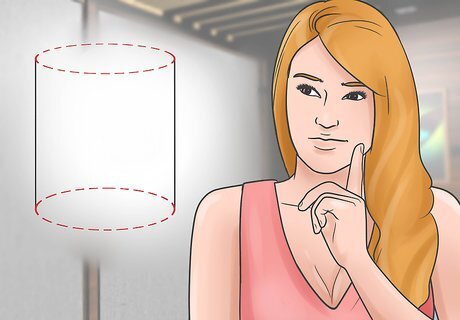
Visualize the top and bottom of a cylinder. A can of soup is the shape of a cylinder. If you think about it, the can has a top and a bottom that are the same. Both of these ends are the shape of a circle. The first step to finding the surface area of your cylinder will be to find the surface area of these circular ends.
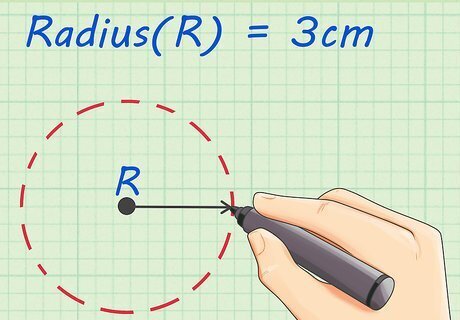
Find the radius of your cylinder. The radius is the distance from the center of a circle to the outer edge of the circle. Radius is abbreviated “r.” The radius of your cylinder is the same as the radius of the top and bottom circles. In this example, the radius of the base is 3 centimeter (1.2 in). If you are solving a word problem, the radius may be given. The diameter also might be given, which is the distance from one side of the circle to the other, passing through the center point. The radius is exactly one half the diameter. You can measure the radius with a ruler if you are looking for the surface area of an actual cylinder.
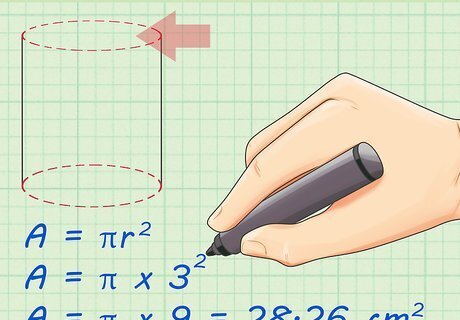
Calculate the surface area of the top circle. The surface area of a circle is equal to the number pi (~3.14) times the radius of the circle squared. The equation is written as π x r. This is the same as saying π x r x r. To find the area of the base, just plug the radius, 3 centimeter (1.2 in), into the equation for finding the area of a circle: A = πr. Here's how you do it: A = πr A = π x 3 A = π x 9 = 28.26 cm
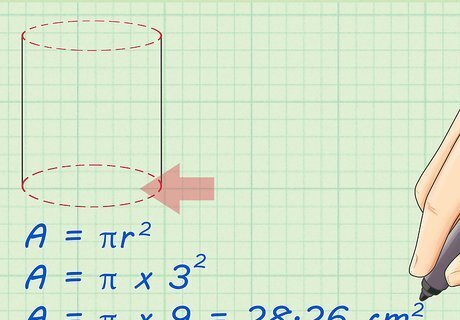
Do it again for the circle on the other side. Now that you have solved for the area of one base, you have to take into account the area of the second base. You can follow the same steps as you did with the first base, or you can recognize that the bases are identical. You can skip using the area equation a second time for the second base if you understand this.
Calculating the Surface Area of the Edge (2π x r x h)
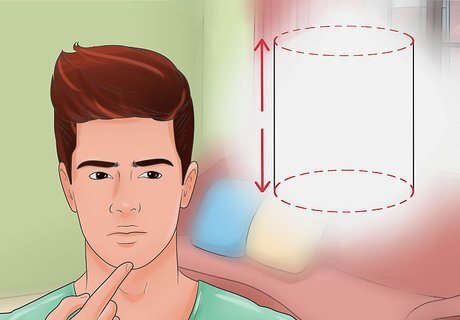
Visualize the outside edge of a cylinder. When you visualize a cylindrical soup can, you should see a top and a bottom base. The bases are connected to each other by a “wall” of can. The radius of the wall is the same as the radius of the base, but unlike the base, the wall has height.

Find the circumference of one of the circles. You will need to find the circumference to find the surface area of the outer edge (also known as lateral surface area). To get the circumference, simply multiply the radius by 2π. So, the circumference can be found by multiplying 3 centimeter (1.2 in) by 2π. 3 centimeter (1.2 in) x 2π = 18.84 centimeter (7.4 in).
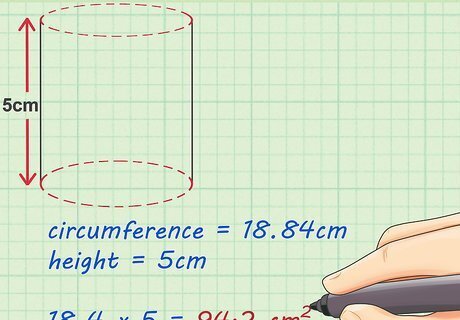
Multiply the circumference of the circle by the height of the cylinder. This will give you the outer edge surface area. Multiply the circumference, 18.84 centimeter (7.4 in), by the height, 5 centimeter (2.0 in). 18.84 centimeter (7.4 in) x 5 centimeter (2.0 in) = 94.2 cm.
Putting It Together ((2) x ( π x r2)) + (2π x r x h)
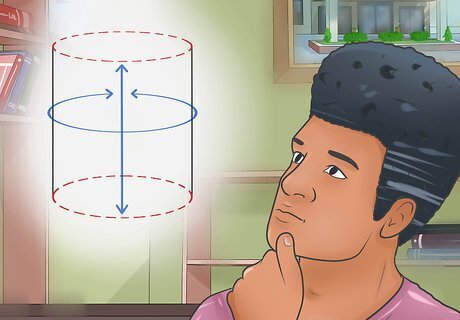
Visualize the entire cylinder. First, you visualized how the top and bottom base and solved for the area contained on those surfaces. Next, you thought about the wall that extends between those bases and solved for that space. This time, think of the can as a whole, and you are solving for the entire surface.
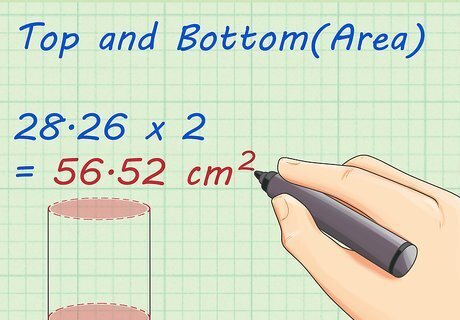
Double the area of one base. Simply multiply the previous result, 28.26 cm, by 2 to get the area of both bases. 28.26 x 2 = 56.52 cm. This gives you the area of both bases.
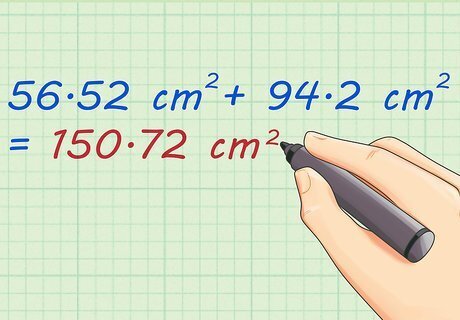
Add the area of the wall and the base area. Once you add the area of the two bases and the outer surface area, you will have found the surface area of the cylinder. All you have to do is add 56.52 cm, the area of both bases, and the outer surface area, 94.2 cm. 56.52 cm + 94.2 cm = 150.72 cm. The surface area with a cylinder with a height of 5 centimeter (2.0 in) and a circular base with a radius of 3 centimeter (1.2 in) is 150.72 cm.
















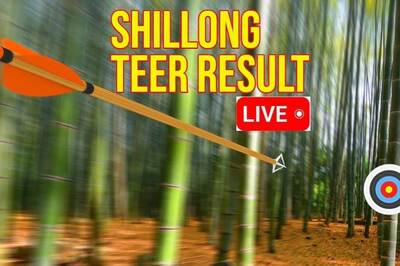


Comments
0 comment